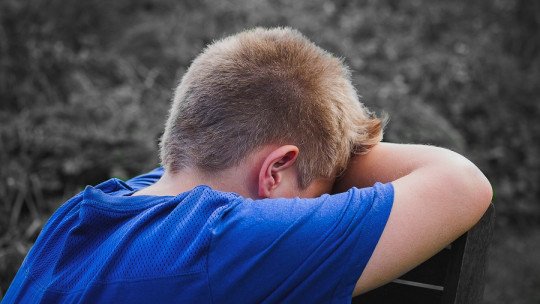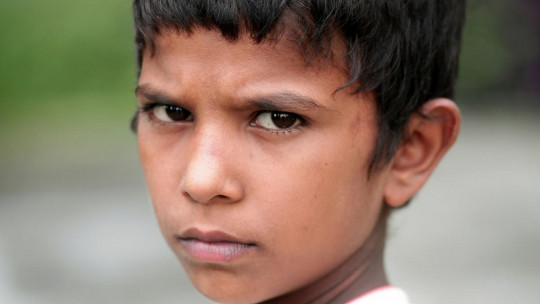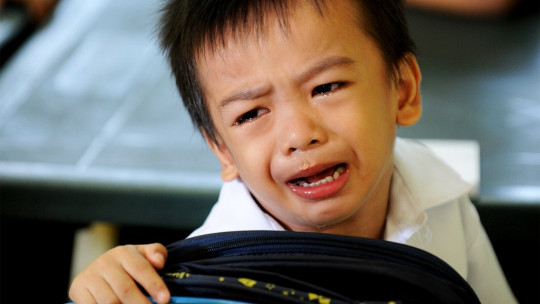
Childhood is a period full of discoveries and learning, simultaneously involving the experience of a diverse set of emotional challenges. Learning to experience negative emotions is part of the human experience, and it is during childhood when we begin to experiment with them. One of these challenges is known as separation anxiety, a response of anxiety, crying and heightened emotionality when the child says goodbye or separates from his or her caregivers.
The appearance of this separation anxiety is especially visible in the first days of school during childhood, in which children show very high emotionality and crying at the idea of separating for the first time from their parents or caregivers. These anxiety responses can lead to refusal to go to class or abandon these figures, which can lead to long-term problems if an adequate resolution is not given in time.
In this article, Let’s understand what separation anxiety is and what we can do to help a child who experiences it both through our direct action and by promoting collaboration with family, teaching staff and friends.
What is separation anxiety?
As mentioned, separation anxiety is the emotional distress that children feel when separating from their parents or caregivers. This can be a normal reaction during child growth and development, and is usually experienced in the first days of daycare or school. However, when this separation anxiety is not resolved, in the long term it creates an emotionally dependent relationship for these children towards their parents or caregivers. This can hinder their development and social adaptation.
Separation anxiety symptoms can vary in intensity and manifestation depending on the child and their stage of development. Some common signs include excessive crying and resistance to separation from parents or caregivers. Children may cling to their parents tightly, showing resistance to going to school or participating in social activities. Additionally, they may experience excessive fears that something bad will happen to them or their loved ones during the separation.
Short and long term consequences
If not managed properly, separation anxiety can have both short- and long-term repercussions on the child’s emotional well-being. In the short term, it can place significant stress on the child and affect her ability to concentrate on school and social activities. In the long term, untreated separation anxiety could contribute to low self-esteem and difficulties in forming healthy relationships with peers.
Tips to help a child with separation anxiety
Separation anxiety can be challenging for both children and parents. However, There are effective strategies that parents can implement to provide the necessary support and help their children overcome this stage in a positive way. Remember that each child is unique, so it is important to adapt these tips to your child’s needs and personality. With patience, understanding, and a loving approach, you can help your child overcome separation anxiety and develop valuable lifelong emotional skills.
To conclude this article, here are some practical tips, but not all of them work in the same way for all people. Adapt them to your situation and remember to seek professional and therapeutic help if you cannot manage this learning on your own.
1. Open and empathetic communication
Foster an environment where your child feels comfortable expressing their feelings and concerns. Encourage your child to talk about his emotions and listen carefully. Validating his feelings will give him reassurance that it is normal to feel anxious in certain situations and that he is being understood.
2. Gradual separations
Introduce short, manageable separations so that the child gradually gets used to being separated from you. Start with short moments and increase the time little by little. This will help build your child’s confidence in his ability to handle separation situations.
3. Establishing comforting routines
Predictable routines can provide a sense of security for children with separation anxiety. Establish comforting routines before and after separations like reading a book together before school or having a special bedtime ritual.
4. Security objects
Allow your child to have special objects, such as a stuffed animal or blanket, that provide comfort during times of separation. These objects can serve as an emotional bond that provides security in the absence of parents.
5. Positive reinforcement and celebration of achievements
Recognize and celebrate your child’s achievements when facing separation situations. Strengthen their courage and praise their efforts to manage their emotions. Positive reinforcement will strengthen your confidence and self-esteem during challenging times.
6. Practice goodbyes and returns
Do farewell and return home practices so that your child gets used to the dynamics. This can help reduce anxiety associated with separations and show him that you will always come back.
7. Model a positive attitude
Learning by modeling is learning that occurs through the observation of models that replicate the behaviors that you want to learn. Parents can model a positive and calm attitude during goodbyes. If you convey trust and calm, your child is more likely to feel safe when facing separation.
8. Collaboration with teachers
If separation anxiety is related to school, communicate your concerns to the teaching staff. Work together to find strategies to ease the child’s transition to school and provide additional support when needed.








